Botanical Name: Arabis caucasica
Common Name: mountain rock cress
Family: Brassicaceae
Distribution/Origin: southern Europe
Leaf: loose rosettes of grey green leaves, branching hairs on surface, elliptic to ovate in shape, pinnately lobed margins with acute to attenuate bases
Bud: alternate
Flower: 4 petaled, white, fragrant, racemes, hermaphrodite, bee pollinated, blooms in May
Fruit/Seed: silique, not showy, present in June
Fruit/Seed: silique, not showy, present in June
Stem/Bark: green, flexible
Size: 0.5-1’ height, 0.5-1’ spread
Habit: sprawling, spreading
Form: mat like, mounding
Soil conditions: sharp drainage, average, rocky, gravelly
Moisture: medium to dry
Sun: full sun
Exposure: tolerant of drought, dry soils, shallow rocky soils. Intolerant of high heat and humidity
Landscape use: mass plantings, groundcover, rock gardens, slopes and walls, border or edging plant, spring interest
Notes: cut back after flowering to promote dense foliage and decrease scraggly appearance. Wet soils will cause winter rot.
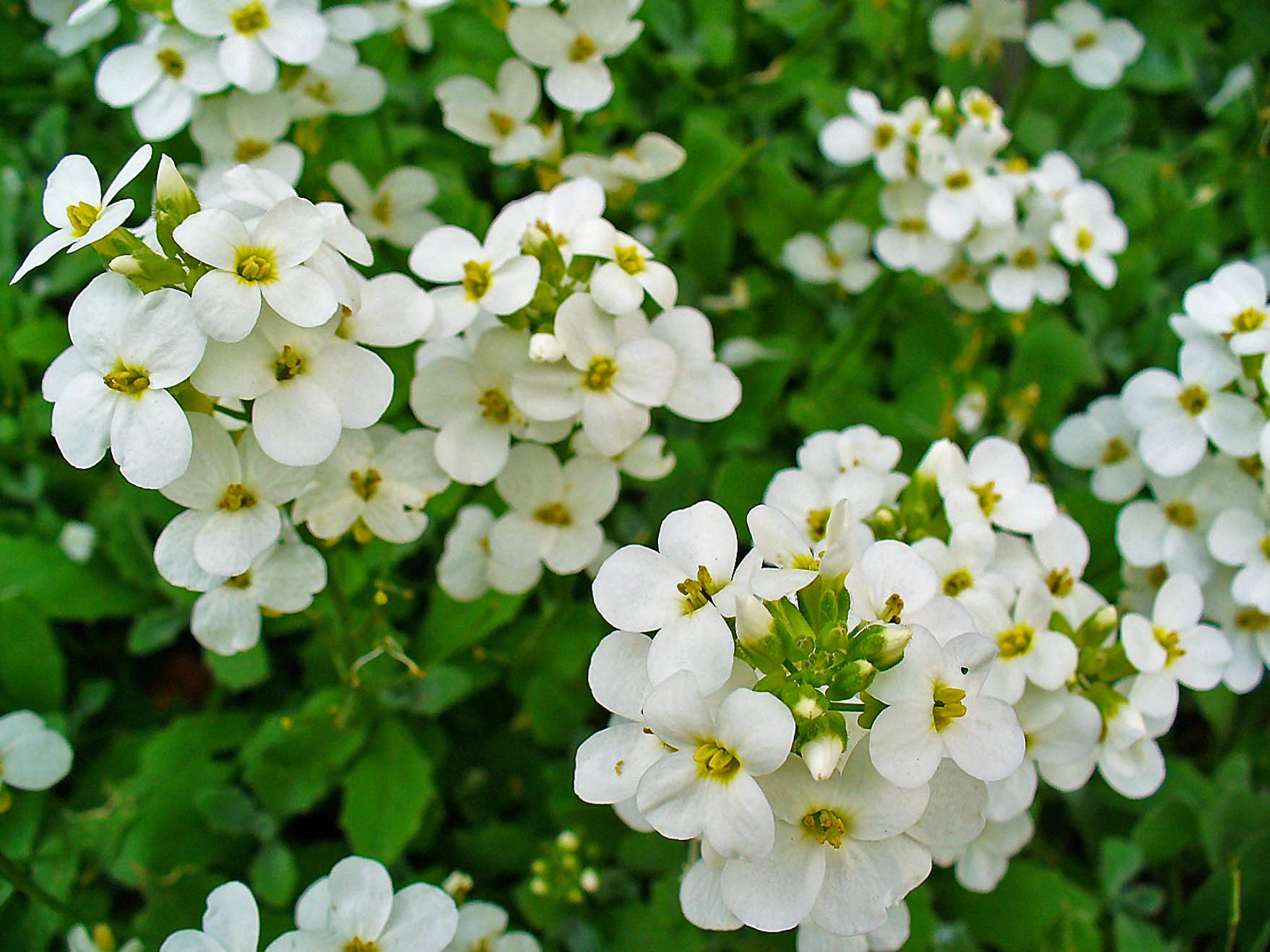
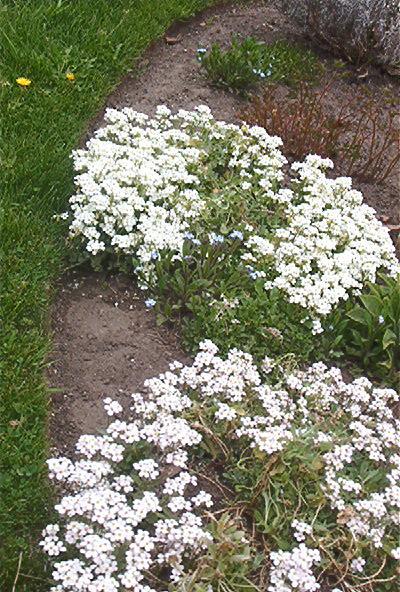

Botanical Name: Arbutus unedo
Common Name: strawberry tree
Family: Ericaceae
Distribution/Origin: Europe, Mediterranean
Leaf: dark green, glossy, elliptic to obovate with cuneate bases, pinnate venation, serrated margins, short red petioles
Bud: alternate
Flower: urceolate in shape, white to light pink (rarer), panicles of 10-30, hermaphroditic, blooms Oct-Nov
Fruit/Seed: red/orange berry, rough surfaces and mealy texture, yellow insides
Stem/Bark: papery, exfoliating, multi stemmed, red to brown in color
Size: 15-30’ height, 10-15’ spread
Habit: spreading, upright
Form: rounded
Soil conditions: well drained, nutrient rich
Moisture: moderate
Sun: full sun to partial shade
Exposure: young plants need winter protection, dislikes cold and drying winds. Tolerant of industrial pollution.
Landscape use: attracts wildlife, mixed shrub borders, small garden space, winter interest, woodland margin
Notes: Easy to propagate - especially from seed.




Botanical Name: Arum italicum
Common Name: painted arum, Italian arum
Family: Araceae
Distribution/Origin: Africa, Europe
Leaf: dark green with heavy white venation, undulated margins, sagittate shaped, glossy, pale green midribs
Bud: basal
Flower: erect spadix with spathe partially enveloping, minute creamy white flowers, fragrant, blooms May-June
Fruit/Seed: bright orange red berries
Stem/Bark:
Size: 12-18” height, 4-11” spread
Habit: spreading, upright
Form: mounded
Soil conditions: humusy, organically rich
Moisture: consistently moist
Sun: partial to full shade
Exposure: protect from harsh winter winds & cold
Landscape use: woodland garden, shaded areas, naturalized areas, rain gardens
Notes: foliage goes dormant in the summer, evergreen in mild climates
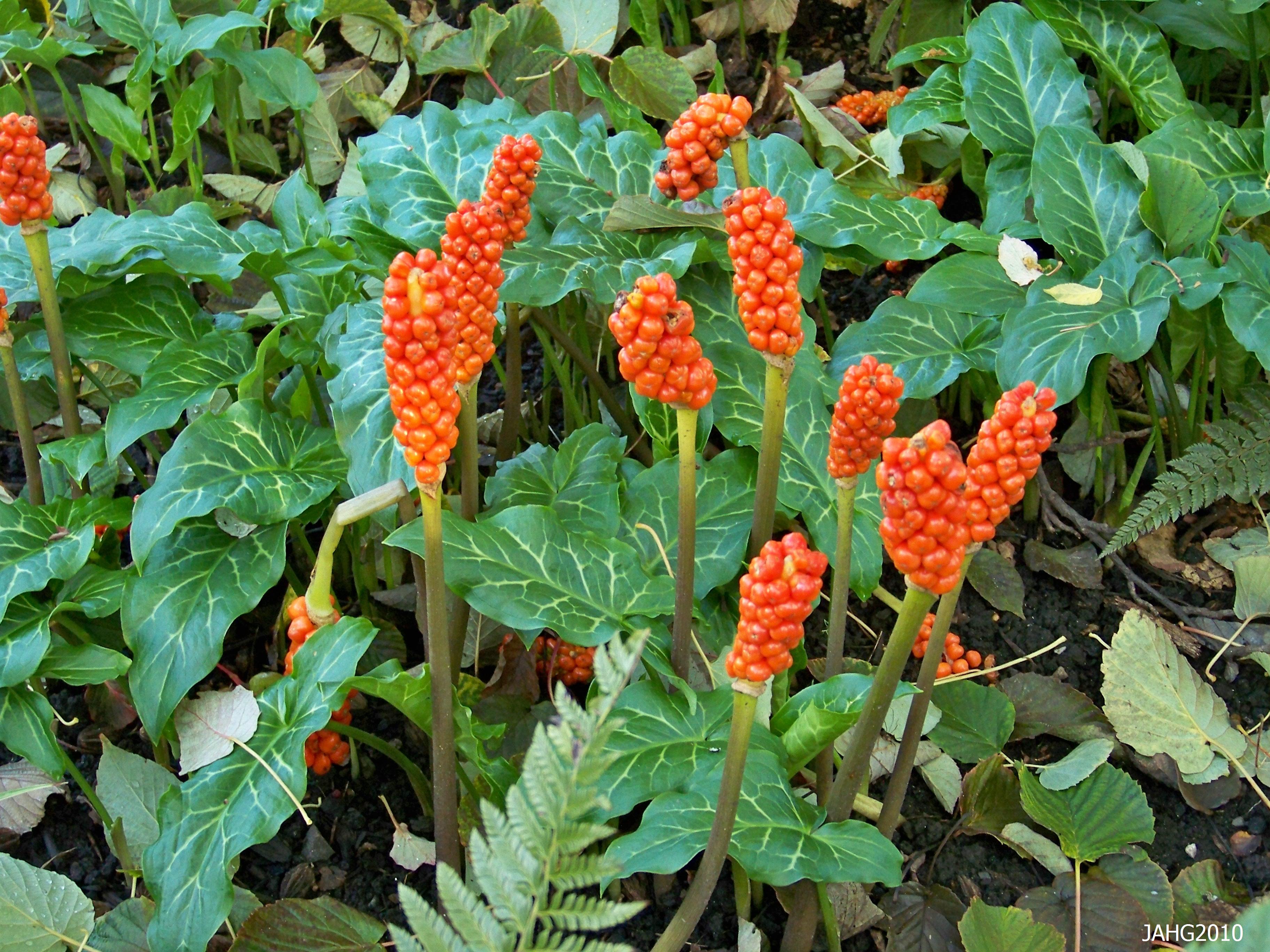



Botanical Name: Camellia lutchuensis
Common Name: fragrant camellia
Family: Theaceae
Distribution/Origin: China, Japan
Leaf: elliptical shape, leathery texture, glossy sheen, serrated margin
Bud: tiny red buds, alternate
Flower: solitary white rosettes, deliciously fragrant, red blush on petals from leaf bud scar
Fruit/Seed: capsules, dark brown rounded seeds
Stem/Bark: smooth stems,
Size: 8-15’ height, 4-6’ spread
Habit: upright, spreading, graceful arching stems
Form: open
Soil conditions: organically rich, well drained
Moisture: moist but not wet
Sun: part sun to part shade
Exposure:
Landscape use: specimen, woodland border, mixed shrub border, container
Notes: most fragrant of all the camellias. The Japanese have a theory that a ‘bird should be able to fly through a Camellia’ in regards to their open habit and ability to handle a hard winter prune.
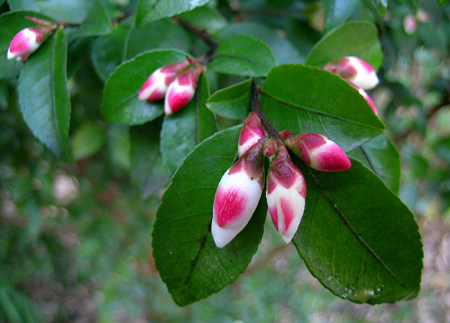



Botanical Name: Camellia sasanqua 'Setsugekka'
Common Name: autumn camellia
Family: Theaceae
Distribution/Origin: Japan
Leaf: glossy, dark green, thin but leathery, elliptical, toothed margins
Bud: alternate
Flower: semi double blooms of white with numerous bright yellow stamens, small in size but numerous in number, blooms Jan-July
Fruit/Seed: red capsule
Stem/Bark: smooth, brown to red
Size: up to 10’ height by 5’ spread
Habit: spreading
Form: upright
Soil conditions: acidic, organically rich, well drained
Moisture: moist
Sun: shade to dappled sun
Exposure: keep out of intense heat or reflected light, well watered plants can tolerate full sun
Landscape use: shaded areas, woodland margin, mixed borders, specimen plant
Notes: easy to train on an espalier or trellis. Does not recover well from heavy prunes.




Botanical Name: Chaenomeles japonica
Common Name: Japanese quince
Family: Rosaceae
Distribution/Origin: Japan
Leaf: thick and fleshy, light green, coarsely toothed margins, broad to ovate
Bud: alternate
Flower: 5 petaled, orange-red blooms, creamy white stamens, appear before leaves in spring, blooms in April
Fruit/Seed: yellow pomme with red to brown seeds
Stem/Bark: spiny/tangled brown grey stems,
Size: 3-4’ height, 6-8’ spread
Habit: dense branching, low growing, suckering
Form: vase
Soil conditions: average soils, adaptable but prefers well drained loams
Moisture: even moisture
Sun: partial shade to full sun
Exposure: tolerant of atmospheric pollution, established plants tolerant of some drought
Landscape use: dappled shade, woodland margin,
Landscape use: dappled shade, woodland margin,
Notes: best flowering occurs in full sun, chlorosis will occur in soils with high pH
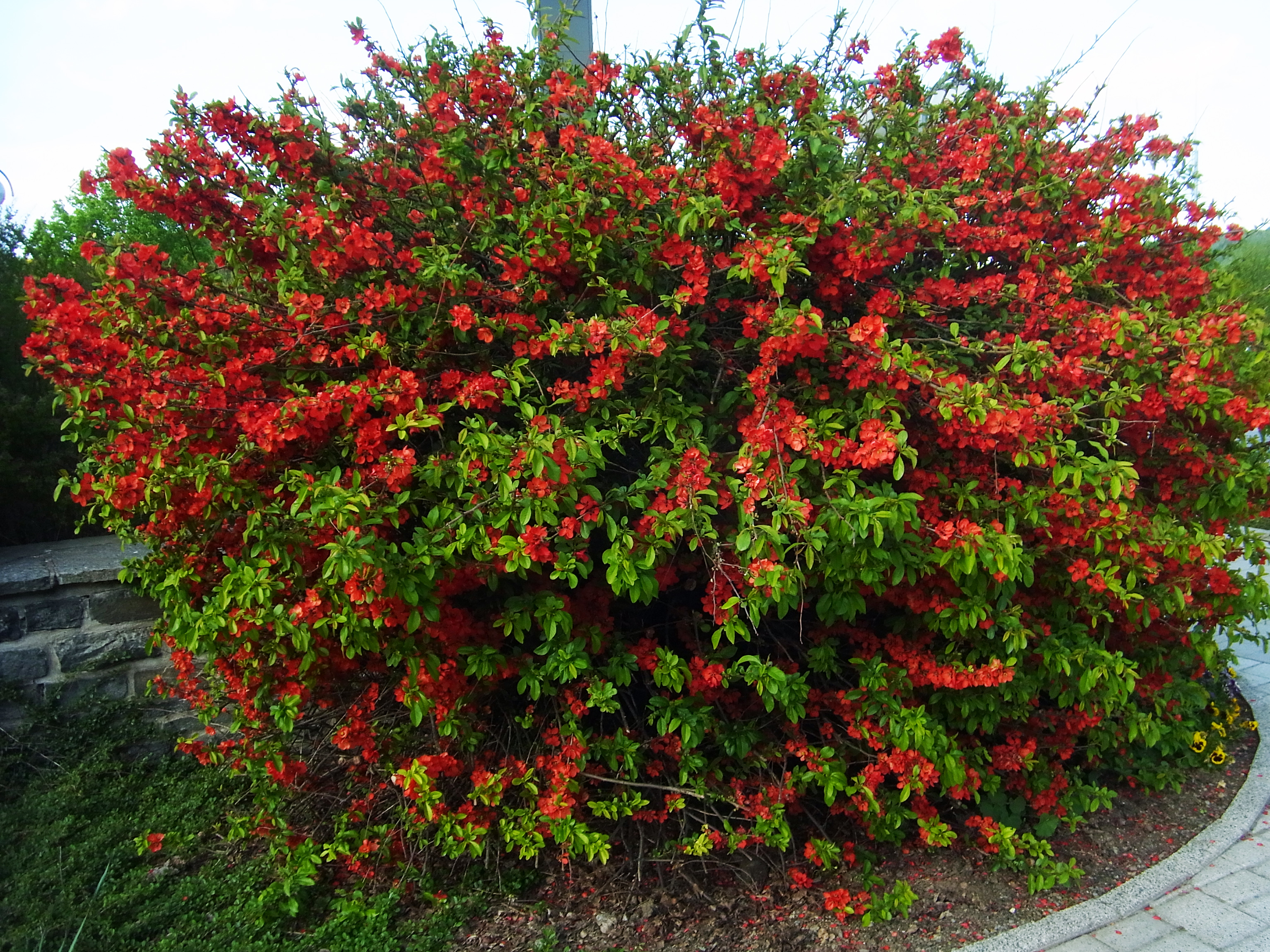



Botanical Name: Corylopsis spicata
Common Name: winter hazel
Family: Hamamelidaceae
Distribution/Origin: China, Japan
Leaf: ovate to obovate, emerge bronze-purple turning to blue-green in later spring. Glaucous with pubescent undersides, pinnate venation
Bud: alternate
Flower: small drooping racemes, clusters of tiny fragrant yellow blooms, with red-purple anthers, bloom late winter-early spring before foliage emerges
Fruit/Seed: two beaked capsule containing two small seeds
Stem/Bark: brown to grey, light fissuring with old wood exfoliating
Size: 4-8’ height, 6-10’ spread
Habit: multi stemmed, open, spreading, upright
Form: oval, vertical, round
Soil conditions: acidic, light, organically rich, well drained
Moisture: medium moisture
Sun: full sun to partial shade
Exposure: protect from harsh winds
Landscape use: shrub borders, woodland margins, spring interest, scent garden
Notes: prune as needed immediately after flowering

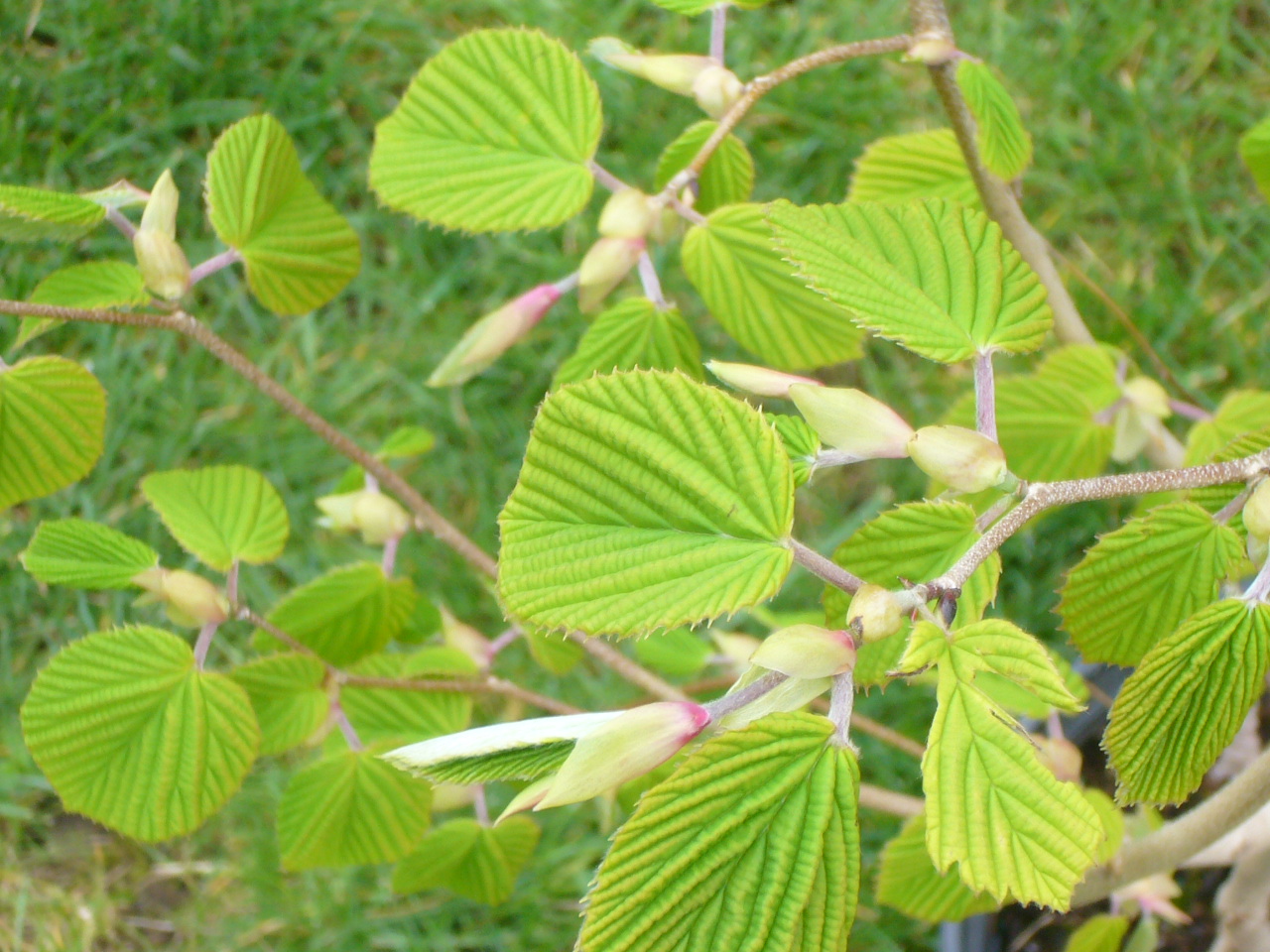


Botanical Name: Hedera helix
Common Name: English ivy
Family: Araliaceae
Distribution/Origin: Europe
Leaf: lobed, simple, leathery texture with palmate-pinnate venation, green to dark green, elliptic to ovate, cordate-truncate bases, young leaves pubescent
Bud: alternate
Flower: perfect, 5 petaled, white-green-yellow umbels, blooms Sept-Oct
Fruit/Seed: black or orange-red drupes, Feb-April
Stem/Bark: adventitious roots, pubescent stems
Size: 50-100’ height, 30-70’ spread
Habit: spreading, climbing
Form: mounding
Soil conditions: average, can grow in nutritionally poor soils
Moisture: dry to wet
Sun: deep shade to full sun
Exposure: tolerant of drought, wet soils and atmospheric pollution
Landscape use: erosion control, attracts beneficials, filler, group or mass planting, indoor plant, groundcover
Notes: extremely invasive and will “smother” plants growing nearby. Frequently seen climbing up trees. Irresponsible to plant!




Botanical Name: Crocus chrysanthus
Common Name: snow crocus, golden crocus
Family: Iridaceae
Distribution/Origin: Europe
Leaf: simple, parallel venation, glabrous surfaces, linear shape with entire margins
Bud: basal
Flower: perfect, campanulate, yellow stamens, showy yellow to purple-white, fragrant, blooms Feb-March
Fruit/Seed: insignificant
Stem/Bark: simple green stems, grown from corms
Size: 4-8” height, up to 8” spread
Habit: open
Form: vase
Soil conditions: rocky, gravelly, well drained
Moisture: low
Sun: full sun to partial shade
Exposure:
Landscape use: rock gardens, winter interest, bedding plant, container gardening, perennial border, small garden space, woodland margin
Notes:
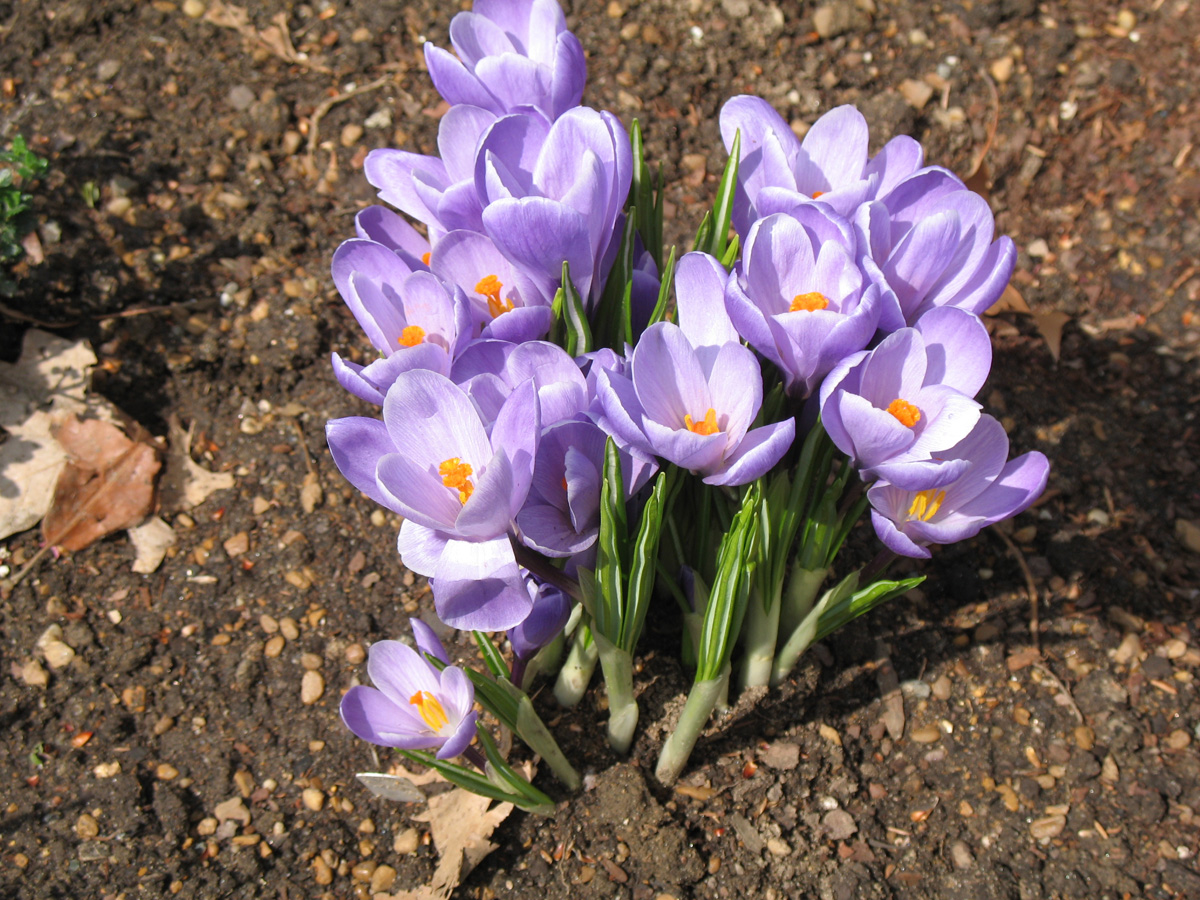
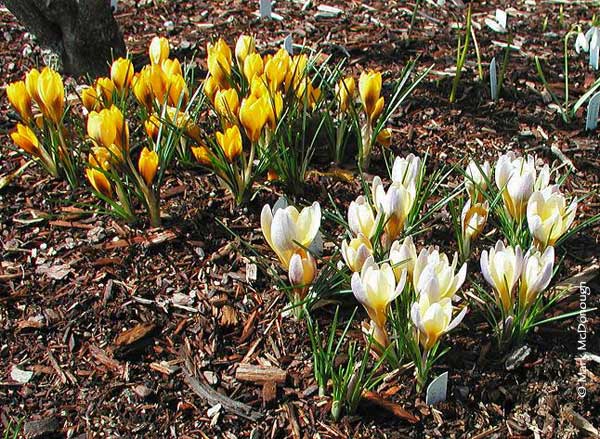


Botanical Name: Crocus vernus
Common Name: Dutch crocus, crocus
Family: Iridaceae
Distribution/Origin: Europe
Leaf: parallel venation, linear with entire margins, sheathing bases, green in color with white midrib
Bud: basal
Flower: solitary, campanulate, purple/white/yellow with deep yellow stamens, blooms in March
Fruit/Seed: insignificant
Stem/Bark: green stems, grown from corms
Size: 4-8” height, up to 8” spread
Habit: upright
Form: columnar
Soil conditions: well drained, rocky, gravelly
Moisture: moderate
Sun: full sun to partial shade
Exposure:
Landscape use: alpine, container planting, bedding plant, perennial garden, rock garden, spring interest
Notes:



Botanical Name: Iris danfordiae
Common Name: iris
Family: Iridaceae
Distribution/Origin: Turkey
Leaf: narrow, grass like, elliptic, green, parallel venation
Bud: basal
Flower: bright yellow with tiny brown or black spots on inner petals, ligulate corolla shape
Fruit/Seed: loculicidal capsules with multiple seeds
Stem/Bark: short green stems, grown from bulbs/offsets
Size: 4-6” height, up to 4-6” spread
Habit: low growing, upright
Form: columnar, clumping
Soil conditions: average, well drained
Moisture: dry to medium
Sun: full sun to part shade
Exposure: prefers dry soils in the summer
Landscape use: mass plantings, rock gardens, border fronts, along walks, streams, or ponds
Notes:




Botanical Name: Iris unguicularis
Common Name: Algerian iris, winter iris
Family: Iridaceae
Distribution/Origin: North Africa, SW Asia
Leaf: long elliptic leaves with parallel venation, grass like, deep green, evergreen
Bud: basal
Bud: basal
Flower: 3 large spreading or pendent fall petals, alternating with 3 erect, often smaller, standard petals, pale lilac to purple with yellow bands on the falls, pronounced perianth tubes, fragrant, late winter to early spring blooms
Fruit/Seed: 3 chambered capsule with numerous seeds
Stem/Bark: long green flower stalks with sheaths, grown from underground rhizomes
Size: 12-18” height, 9-12” spread
Habit: spreading, upright
Form: clumping
Soil conditions: rocky, average, can grow in nutritionally poor soils, well drained
Moisture: moderate, can tolerate dry soils
Sun: full sun
Exposure:
Landscape use: naturalized areas, dry areas, garden beds and borders, container gardening, woodland margin
Notes:




Botanical Name: Magnolia zenii
Common Name: zen magnolia
Family: Magnoliaceae
Distribution/Origin: China
Leaf: deciduous, simple, dark green, pale green undersides
Bud: alternate, winter buds covered with silky hairs
Flower: white fragrant flowers with purple-pink bases and veins, red stamens
Fruit/Seed: outer seed coats are scarlet
Stem/Bark: grey, rough texture
Size: 16-23’ height, 15-20’ spread
Size: 16-23’ height, 15-20’ spread
Habit: upright
Form: pyramidal
Soil conditions: well drained
Moisture: average, doesn’t like wet soils
Sun: full sun to partial shade
Exposure:
Landscape use: specimen tree, mixed shrub beds, naturalized areas
Notes: critically endangered. Earliest flowering magnolia.




Botanical Name: Narcissus ‘February Gold’
Common Name: cyclamineus daffodil
Family: Amaryllidaceae
Distribution/Origin: garden origin
Leaf: long linear, parallel venation, green
Bud: basal
Flower: solitary (sometimes umbels), long corona with extremely reflexed petals (perianth segments), bright yellow, blooms March-April
Fruit/Seed: insignificant
Stem/Bark: long green stems, grown from bulbs
Size: 1-1.5’ height, up to 1’ spread
Habit: tufted, upright
Form: clumping
Soil conditions: organically rich loams, well drained
Moisture: consistent moisture during growing season
Sun: full sun to partial shade
Exposure:
Landscape use: beds, borders, wild gardens, woodland areas, in front of shrubs or mass plantings in front of trees, sweeping drifts, mixed bulb beds
Notes: bulb rot may occur in poorly drained soils. Do not cut back until foliage has begun to decline in autumn.




Botanical Name: Narcissus King Alfred Group
Common Name: trumpet daffodil
Family: Amaryllidaceae
Distribution/Origin: garden origin
Leaf: parallel venation, linear, elliptic, green, filiform shape with entire margins
Bud: basal
Flower: perfect, solitary, salverform corolla, 6 petalled, bright yellow, blooms April to May
Fruit/Seed: insignificant
Stem/Bark: green stems
Size: 1-2’ height, up to 1’ spread
Habit: upright
Form: vase
Soil conditions: well drained, average, prefers organically rich loams
Moisture: consistent moisture during growing season
Sun: full sun to part shade
Exposure:
Landscape use: beds, borders, wild gardens, woodland areas, in front of shrubs or massed under trees, sweeping drifts
Notes: bulb rot may occur if soils are too wet and improperly drained.




Botanical Name: Petasites japonicus
Common Name: bog rhubarb, fuki, giant butterbur, Japanese sweet coltfolt
Family: Asteraceae
Distribution/Origin: Japan, Europe, introduced to British Columbia
Leaf: simple, lobed or unlobed (not separated into leaflets), heart shaped, suborbicular, broad pale bracts
Bud: basal
Flower: disc flowers, rayless, dioecious, cream to white on erect stems
Fruit/Seed: achene with unbranched hairs on tip
Stem/Bark: wide spreading rhizomes
Size: up to 2’ height by 5’ spread
Habit: spreading, dense, multi stemmed
Form: upright, erect
Soil conditions: well drained, deep, humusy organically rich
Moisture: moist
Sun: full shade to partial shade
Exposure: can handle full sun IF it is a wet consistently moist area, will scorch otherwise
Landscape use: low maintenance, woodland gardens, naturalized areas, ground cover
Notes:




Botanical Name: Primula juliae
Common Name: Julia primrose
Family: Primulaceae
Distribution/Origin: Iran
Leaf: round to cordate, bullate, dark shiny green, reddish stalk, crenate-serrated margins, evergreen
Bud: basal
Bud: basal
Flower: magenta-lilac, darker at center around yellow eye, notched petals not overlapping on slender red pedicels, solitary, spring blooming
Fruit/Seed: capsule
Stem/Bark: rhizomatous
Size: 5-7” height, 10-20” spread
Habit: mat forming, spreading
Form: small clumps
Soil conditions: shallow soils, acidic, high in organic matter, well drained
Moisture: moist
Sun: full sun
Exposure:
Landscape use: rock gardens, alpine garden, borders, beds, moist sites, pathways
Notes:



Botanical Name: Primula vulgaris subsp. sibthorpii
Common Name: primula, primrose
Family: Primulaceae
Distribution/Origin: garden origin
Leaf: simple, glabrous pubescent surfaces, oblanceolate-obovate shape, crenate margins with cuneate bases and rounded aspices
Bud: basal
Flower: solitary, 5 petaled, salverform, showy, multi colored (red, pink, white, yellow...etc), fragrant, blooms Feb-May
Fruit/Seed: capsule
Stem/Bark: rhizomatous
Size: 5-7” height, 10-20” spread
Habit: dense
Form: round
Soil conditions: well drained, acidic, organically rich
Moisture: moist
Sun: part shade
Exposure: can handle full sun if moisture is consistent
Landscape use: bedding plant, container gardening, group or mass planting, indoor plant, rock garden, winter interest, woodland margin
Notes:




Botanical Name: Prunus mume
Common Name: Chinese plum, Japanese apricot, plum blossom
Family: Rosaceae
Distribution/Origin: China, later introduced to Japan, Korea, Taiwan, Vietnam
Leaf: broad oval with pointed aspices, sharply serrulate
Bud: alternate
Flower: solitary or paired, red calyxes and yellow stamens, Dec-March
Fruit/Seed: drupe, with groove running from stalk to tip, yellow with a red blush, fuzzy skinned, clinging stones
Stem/Bark:
Size: 15-20’ height, 15-20’ spread
Habit: rounded
Form: vase like
Soil conditions: average, acidic loams, well drained
Moisture: medium
Sun: full sun to partial shade
Exposure: partial shade if afternoons are exposed and hot, also appreciates shelter from cold winds and temperatures
Landscape use: walkways, parks, against walls/fences, specimen, winter interest
Notes:




Botanical Name: Rhododendron barbatum
Common Name: barbed stalked rhododendron
Family: Ericaceae
Distribution/Origin: Himalayas
Leaf: elliptic to lanceshaped, glossy surfaces, wooly undersides when young, leaf stalks have glandular bristles (giving barbed appearance)
Bud: alternate, terminal reproductive buds
Flower: compact umbels, deep red tubular bell shaped blooms, 5 petalled, anthers are black-purple, blackish red nectar pouches at base, flowers April-June
Fruit/Seed: cylindric capsule
Stem/Bark: smooth greyish peeling bark, young shoots have bristled hairs
Size: 36-48” height, 4-6’ spread
Habit: upright
Form: bushy
Soil conditions: well drained, rich with organic matter
Moisture: moderate
Sun: full sun to partial shade
Exposure:
Landscape use: specimen, small garden spaces, mixed shrub borders, spring interest
Notes:
Botanical Name: Rhododendron Cornubia Group
Common Name: cornubia
Family: Ericaceae
Distribution/Origin: garden origin
Leaf: dark green, elliptic in shape, leathery, leave posture oriented downwards, entire margins, cuneate bases
Bud: alternate, terminal reproductive buds
Flower: red-pink, campanulate blooms, conical truss, blooms Feb-April
Fruit/Seed: brown capsule
Stem/Bark: grey to brown brown with fissuring, stems are smooth
Size: 6-13’ height, 6-13’ spread
Habit: upright, multi stemmed
Form: rounded
Soil conditions: rich, well drained
Moisture:
Sun: partial sun
Exposure:
Landscape use: woodland margin, winter/spring interest, specimen
Notes:

Notes:

Botanical Name: Rhododendron dauricum
Common Name: dahurian rhododendron
Family: Ericaceae
Distribution/Origin: eastern Siberia, Mongolia, northern China, Japan
Leaf: small, leathery, shiny green, elliptic to oblong in shape
Bud: alternate, terminal reproductive buds
Flower: funnel shaped
Fruit/Seed:
Stem/Bark:
Size: 4-6’ height by 4-6’ spread
Habit: compact, semi evergreen
Form: round
Soil conditions: acidic, humusy, organically rich, well drained
Moisture: moist
Sun: part shade
Exposure: protect from strong winter winds
Landscape use: specimen, mass plantings, shrub border, mixed border, woodland gardens, shade gardens, foundation plantings
Notes:




Botanical Name: Rhododendron lutescens
Common Name: lutescens rhododendron
Family: Ericaceae
Distribution/Origin: China
Leaf: oblong-lanceolate or ovate-lanceolate, long slender apices with tapered base, dark green with paler scaly undersides, new growth bronzey
Bud: alternate
Flower: single or in pairs, pale yellow, broadly funnel shaped, 10 protruding stamens, Feb-April
Fruit/Seed: septicidal capsules
Stem/Bark: smooth brown flaking bark
Size: 3-7’ height, 6-8’ spread
Habit: loose, upright, evergreen
Form: open
Soil conditions: humusy, rich, well drained
Moisture: average
Sun: full sun to partial shade
Exposure: sheltered
Landscape use: shrub gardens, mixed borders, spring interest
Notes:


Botanical Name: Rhododendron ‘Rosevallon’
Common Name: rosevallon rhododendron
Family: Ericaceae
Distribution/Origin: garden origin
Leaf: broadly elliptic, blue green cast color with burgundy undersides, recurved margins
Bud: alternate
Flower: fleshy tubular-campanulate blooms, bright crimson, large calyx, held in trusses up to 12, blooms April-May
Fruit/Seed: capsule
Stem/Bark: smooth stems with grey-brown fissured bark
Size: 4-6’ height, 6-10’ spread
Habit: variable, compact to upright, spreading
Form: rounded
Soil conditions: rich, acidic, well drained
Moisture: even moisture
Sun: part sun to part shade
Exposure:
Landscape use: mixed borders, shrub borders, spring interest, woodland margin, specimen, accent
Notes:




No comments:
Post a Comment